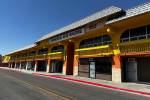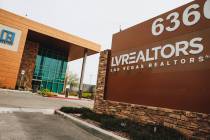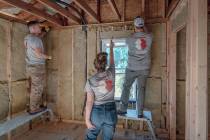Preserving Las Vegas neighborhoods a growing practice
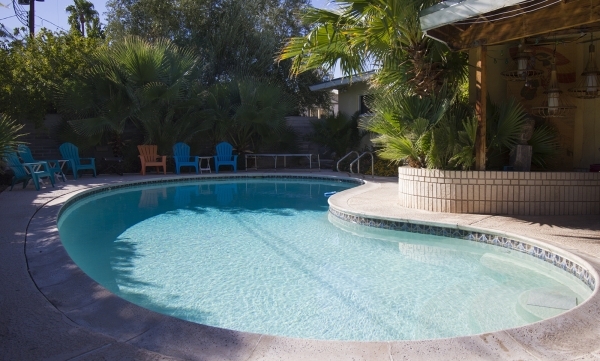
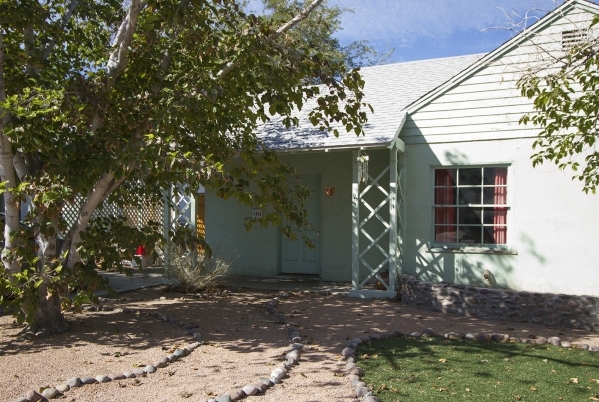
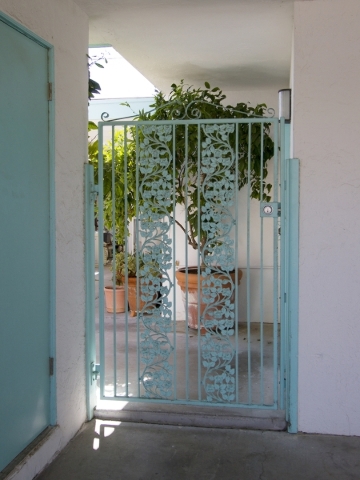
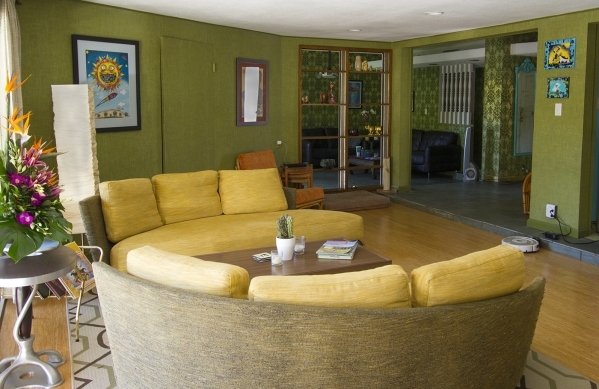
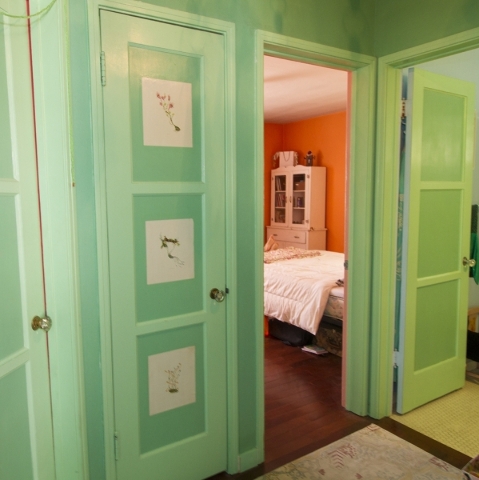
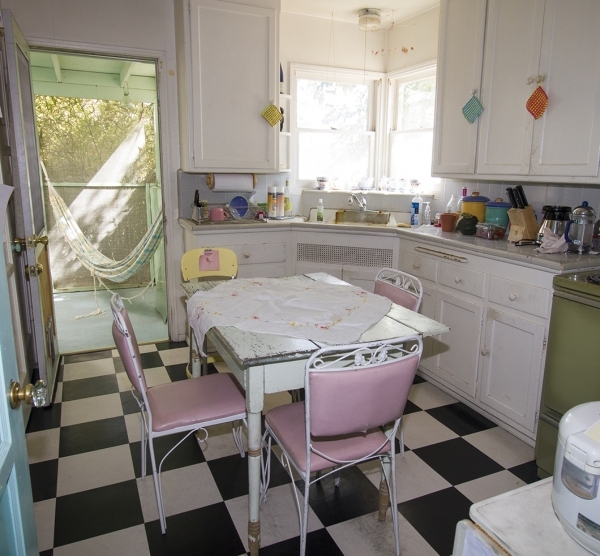
When Welthy Silva first moved to Las Vegas from the East Coast, she asked her Realtor for the oldest, smallest house she could find.
“She looked at me like I had three heads,” said Silva, now happily settled into an 800-square-foot, early-1940s cottage in downtown’s Huntridge neighborhood.
Las Vegas is not a city known for its reverence for the past — houses built in the 1980s are considered “old,” and once-grand casinos like the Riviera can be blasted to smithereens as soon as their glory begins to fade.
But interest in historic preservation is growing here of late, fueled by the current cultural mania for anything Midcentury, the revitalization of downtown and a critical mass of homes that have reached the 50-year mark.
The city of Las Vegas recently paid a team of researchers to roam the city’s vintage neighborhoods, documenting homes that date to the 1940s, when the federal government helped build tidy subdivisions for defense workers. The goal: to identify districts that could be nominated for inclusion on the National Register of Historic Places.
“These neighborhoods are very important. They’re what we have left of our World War II heritage,” city historic preservation officer Courtney Mooney told homeowners at a meeting about the project this summer.
Photographs of Las Vegas from the era show a small but fast-growing town surrounded by desert, with African-Americans segregated in West Las Vegas.
The newly created Federal Housing Administration not only put up money to spur housing construction in the city — considered militarily important due to the presence of a gunnery school (now Nellis Air Force Base) and the Basic Magnesium Plant in what is now Henderson. It also influenced the shape of the developments, advocating that 10 percent of land be set aside for recreation, with amenities like community centers located in the middle.
Consultants found a range of architectural styles in their survey, from the tiny Cape Cods of the Biltmore Addition north of downtown to horizontal ranch homes in Charleston Square.
In Huntridge, McNeil Construction — the same company that built the Basic Magnesium Plant — created hundreds of modest, slant-roofed cottages with hardwood floors clustered around Huntridge Circle Park. Families paid $5,000 each for the homes, according to a flier from the time.
The city plans to use money from its Centennial Fund to continue surveying the neighborhood, which surrounds Maryland Avenue between Charleston and Oakey boulevards, and nominate it for the National Register sometime in 2016.
Residents said they hope the recognition will boost the profile — and property values — of a neighborhood that’s beginning to bounce back from the recession.
“Huntridge has been overlooked for so long,” said Melissa Clary, president of the Huntridge Neighborhood Association. “Once we become an official historic district with a branded identity, it’ll become a more desirable place to live, people will take more pride in homeownership and you’ll see the whole neighborhood change.”
The Centennial Fund has spent more than $1 million per year on historic preservation since 2005.
The transformations of a 1933 post office and courthouse into the Mob Museum and the swooping, Googie-style La Concha motel lobby into the Neon Museum have helped raise awareness that saving old structures can be good for tourism, too.
“Historic preservation isn’t all about being a building-hugger, it’s also about making it pencil out,” said Assemblymember Heidi Swank, executive director of the Nevada Preservation Foundation.
“These buildings still have to be working buildings.”
Swank’s organization is leading a separate effort to get two 1950s-era neighborhoods named as city of Las Vegas historic districts: Beverly Green, where singer Louis Prima once lived, and Paradise Village, designed by Walter Zick and Harris Sharp, the duo behind the Moulin Rouge hotel and many of Las Vegas’ Midcentury commercial buildings.
While a perch on the National Register provides symbolic prestige for a neighborhood, local designation carries more teeth: Homeowners who pull city permits to renovate their properties must also get their plans approved by the city’s Historic Preservation Commission.
The commission’s job is to ensure that area homes retain their vintage flavor — at least from the street. Commissioners might recommend moving solar panels to the back of a home, for example, or changing the size and layout of an addition so it doesn’t disturb the building’s facade.
What they won’t do, say preservation advocates and city staffers, is set strict design guidelines the way a homeowners association might.
“You’re not going to have the design nazis come by and tell you that you can’t paint the house brown, you have to paint it Eisenhower pink,” said John Delikanakis, a Beverly Green resident who supports creating a historic district.
Delikanakis and his spouse, German Delgado, bought their 1959 home in the shadow of the Stratosphere in 1998. They knocked out walls to create an open floor plan and ditched the flocked wallpaper and shag carpeting, hand-painting one wall a burnished gold and adding a mural Delgado painted in the style of Italian master Giovanni Tiepolo.
The front of the house, however, looks straight from the Atomic Era, with its aqua-and-white color scheme, lattice-work entryway and angled roof covered with chunks of white quartz. It’s the kind of renovation that would pass muster in a neighborhood with historic designation.
But just the idea of having the city weigh in can raise the hackles of independent-minded residents who chose their neighborhoods for their varied architecture and lack of HOAs.
A 2009 bid to create a city historic district in Westleigh, just west of Interstate 15 between Charleston and Oakey, failed after opponents concerned about restrictions on remodeling flocked to a planning commission meeting.
Huntridge neighborhood organizers are opting to pursue the less-restrictive National Register designation first, to give residents time to become educated about the different levels of preservation.
“We have people struggling to maintain their properties now,” Clary said. Adding another layer of approval to the process might deter her neighbors from making repairs, she said.
The city requires letters of support from a majority of homeowners before creating a historic district. In Beverly Green, Swank said her team is just five letters away from that threshold. The application would then go before the planning commission and the city council, a process that could take several months.
When supporters knock on doors to talk to their neighbors, they’re quick to emphasize the economic benefits of preservation. Creating a local historic district tends to increase property values, according to a 2005 Brookings Institution report. Homeowners can also get free design tips from the city, such as where to find period-appropriate windows.
“People end up more satisfied with their renovations,” Swank said.
Supporters also point to the John S. Park Historic District, which they say has helped that neighborhood develop a strong identity and weather the recession. The city’s Historic Preservation Commission has only turned down three requests for permits in the district — bounded by Las Vegas Boulevard, Charleston Boulevard, Ninth Street and Franklin Aveune — since it was established in 2003, Mooney said.
The push toward preservation extends beyond Las Vegas city limits. The city of Henderson adopted a Historic Preservation Plan last year, with the goal of preserving significant properties including the original Basic Magnesium townsite.
And in unincorporated Paradise Palms, where groovy 1960s homes once housed celebrities and mobsters, residents hope to create Clark County’s first Historic Neighborhood. Once derided as outdated and gaudy, the houses now play host to Mad Men-style cocktail parties where neighbors show off their Midcentury decor. A bus tour showcasing the neighborhood’s architecture is set for Oct. 10.
With everything old becoming new again, perhaps even Las Vegas’ legions of faux-Spanish-style tract houses will one day earn their place in the history books.
“All of this is about retaining our history,” Swank said. “And part of Las Vegas history is that we grew so fast and built this mass of houses that so many of them look alike. I think that’s going to be fascinating.”




